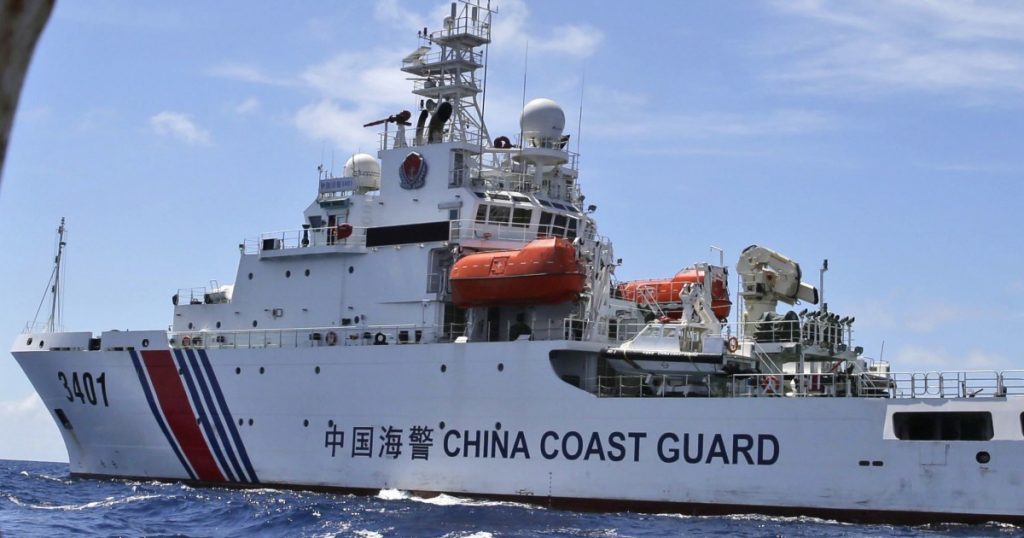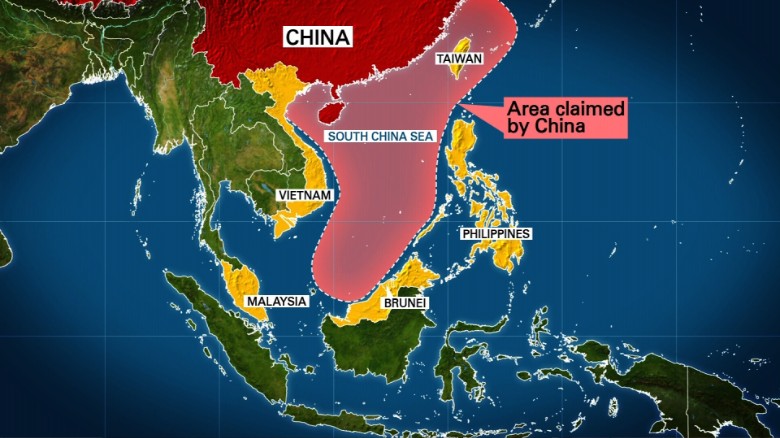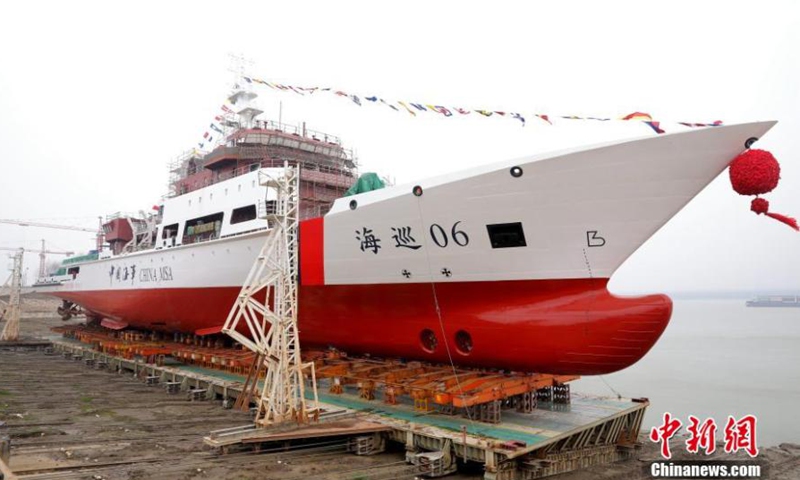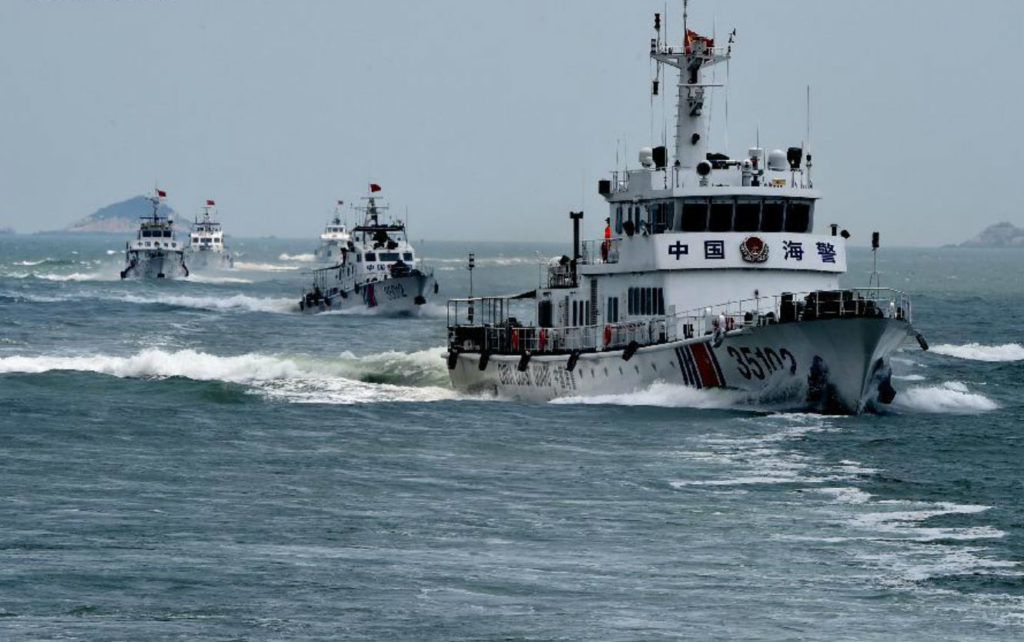
- China’s newly-enacted Coast Guard Law allows the Chinese Coast Guard (CCG) to “take all necessary measures, including the use of weapons, when national sovereignty, sovereign rights, and jurisdiction are being illegally infringed upon by foreign organizations or individuals at sea.”
- The new law also empowers the CCG to halt construction or destroy foreign structures on Chinese-claimed land features, like those on the Philippine-occupied Pag-asa Island and Second Thomas Shoal.
- Several Asian countries including Japan, the Philippines, Vietnam and Indonesia have opposed China’s law saying it could escalate maritime disputes and be invoked to assert “unlawful claims”.
- The Philippines has filed a formal rejection of the law, emphasizing that, given the large area involved and China’s ongoing disputes in the South China Sea, the law is a verbal threat of war to any country that defies it.
- The lack of a definition of ‘jurisdictional waters’ in the final version of the new law will increase the potential for conflict.
- In addition to creating opportunities for misunderstandings between foreign vessels and the CCG, it gives the coastguard flexibility to conduct law enforcement outside of its traditional jurisdictional waters.
China’s new law giving the China Coast Guard (CCG) more freedom to use force against any entity has increased the concerns of its neighbors, especially those who are in its periphery. The Maritime Executive report says that the Philippines has filed a formal rejection of it on January 27, emphasizing that, given the large area involved and China’s ongoing disputes in the South China Sea, the law is a verbal threat of war to any country that defies it.
China’s newly-enacted Coast Guard Law allows the agency to “take all necessary measures, including the use of weapons, when national sovereignty, sovereign rights, and jurisdiction are being illegally infringed upon by foreign organizations or individuals at sea.” This includes the use of small arms, based on the “nature, degree and urgency” of the case and the personnel’s “reasonable judgement.” In the event of serious non-compliance, the use of deck guns would be permitted.
The new law also empowers the CCG to halt construction or destroy foreign structures on Chinese-claimed land features, like those on the Philippine-occupied Pag-asa Island and Second Thomas Shoal. It gives the CCG broad discretion to set up temporary exclusion zones and to board and inspect foreign vessels within Chinese-claimed waters. As China claims the overwhelming majority of the South China Sea as its own, including large segments of the Philippine EEZ, it has significant implications for Philippine fishermen and vessel operators.
Country’s oppose China’s new Coast Guard law

Last week several Asian countries including Japan, the Philippines, Vietnam and Indonesia have opposed China’s law saying it could escalate maritime disputes and be invoked to assert “unlawful claims”. The fears expressed by these countries come in the wake of China’s sweeping claim of sovereignty over much of the South China Sea, which it has already mapped with a so-called nine-dash line.
“After reflection, I filed a diplomatic protest,” said Philippine Foreign Secretary Teodoro Locsin Jr. on January 27. “While enacting law is a sovereign prerogative, this one – given the area involved or for that matter the open South China Sea – is a verbal threat of war to any country that defies the law; which, if unchallenged, is submission to it.”
China’s new law in effect expands its grip over the South China Sea and increases the possibility of “dangerous encounters” between its coastguard and the maritime patrol forces of Vietnam, Malaysia, Indonesia and even the United States, says Trang Pham, a lecturer in international law at Vietnam National University in Ho Chi Minh City. Similar views were expressed by experts at the recent South China Morning Post’s China Conference: Southeast Asia.
The US too has expressed its opposition to the law. State Department spokesman Ned Price told a regular briefing Washington was “concerned by language in the law that expressly ties the potential use of force, including armed force, by the China coast guard to the enforcement of China’s claims, and ongoing territorial and maritime disputes in the East and South China Seas.”
“We are further concerned that China may invoke this new law to assert its unlawful maritime claims in the South China Sea, which were thoroughly repudiated by the 2016 arbitral tribunal ruling,” he said, referring to an international ruling that found in favor of the Philippines in a dispute with China. He added that the United States “stands firm” in its alliance commitments to both Japan and the Philippines.
China on the other hand says that the law is not aimed at any specific country. Apart from its dispute with several ASEAN countries over the South China Sea, China is also engaged with a dispute with Japan over East China Sea whose sovereignty is claimed by China.
China’s clandestine intentions?

On February 8, a week after the law came into effect, China’s largest maritime patrol vessel, Haixun 06 was launched from Wuhan shipyard. It will be used for ‘regulating Taiwan Straits’ waters, preventing pollution, dealing with maritime incidents, cross-strait exchanges and maintaining national maritime sovereignty’, according to the Fujian Maritime Safety Administration.
“These developments indicate that the new law is a threat not only because it allows the CCG to use force, but also because it expresses China’s determination to pursue ‘near-seas defence with far-seas protection’ by mobilizing national resources in support of the CCG to achieve full control of China’s ‘near sea’ regions”, writes Eli Huang, assistant research fellow at the Foundation on Asia–Pacific Peace Studies in Taipei, in the Maritime Executive.
The law aims to consolidate the CCG’s role in near-seas defence. Articles 2 and 3 clearly state that the Coast Guard Authority—which refers to the Chinese People’s Armed Police Force Coast Guard Corps —is responsible for protecting China’s maritime sovereign rights and conducting law enforcement operations in ‘jurisdictional waters’.
The law emphasises the integration of political, military and civilian resources to support the CCG’s development. It says that the State Council, local government and the military should strengthen collaboration with the CCG (Article 8) and compile national spatial plans according to the CCG’s requirements for law enforcement, training and facilities (Article 53). The law also authorises the CCG to expropriate civil organisations’ or individuals’ transportation, means of communication and space in order to protect maritime sovereign rights or to enforce the law (Article 54).
The law obviously targets foreign intervention. Article 21 states that, if foreign military or government vessels operating for non-commercial purposes violate Chinese laws and regulations in the waters under Chinese jurisdiction and they refuse to leave, the CCG authorities have the right to take measures such as deportation or enforced tugging. Article 47 allows the CCG to use hand-held firearms and other measures if foreign vessels enter China’s waters to conduct illegal operations and fail to comply with the CCG’s requests to board and conduct inspections. Under Article 48, the CCG is authorized to use shipborne or airborne firearms when handling ‘serious violent incidents’ at sea or countering attacks on law enforcement vessels or aircraft.
Implications of the CCG law

The CCG is China’s frontline force against foreign intervention in regional maritime disputes, including in the South China Sea and the Senkaku Islands. Its area of operations will now expand to include the Taiwan Strait.
In 1988, Chinese leader Deng Xiaoping set the governing goal for the development of the navy, stating that, by 2020, China’s maritime interests would be secured by the navy’s capability to command the ‘near seas’ out to the second island chain. Now that the navy’s mission has moved beyond the first island chain, the CCG will be the main force for protecting China’s sovereignty within that area.
The CCG will enhance its capability under the framework of civil–military fusion and national defence mobilisation. Since the law provides the legal basis for the CCG to integrate political, military and civilian resources to support its development, strengthening cooperation with the military and the building of supporting facilities by local government could help with training CCG personnel in basic skills and the operations of larger CCG patrol vessels. Such developments would assist the CCG to resolve difficulties that it has faced in recent years, writes Eli Huang.
The lack of a definition of ‘jurisdictional waters’ in the final version of the new law will increase the potential for conflict. In addition to creating opportunities for misunderstandings between foreign vessels and the CCG, it gives the coastguard flexibility to conduct law enforcement outside of its traditional jurisdictional waters.
As the new law shapes the strategic environment in the region, Eli Huang opines that ASEAN needs to put such concerns into future negotiations on the code of conduct for the South China Sea. Regional countries should further analyse the procedures and actions of the CCG, including its cooperation with the Chinese navy in contingency and conflict scenarios, in order to enhance their rapid response capability.
